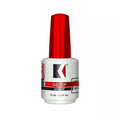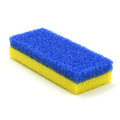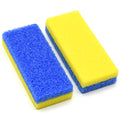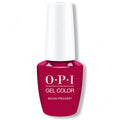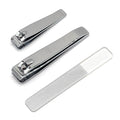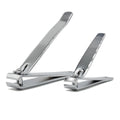Is Polygel Good for Your Nails?

In the quest for lengthy, eye-catching nail designs, many have turned to polygel for its durability and customization potential. But how does this polymer-based enhancement actually impact natural nail health over time? As nail art enthusiasts, we decided to dig into the details on polygel safety, wear time, application methods and more.
What Are Polygel Nails?
Polygel offers a unique consistency unlike gels or acrylics, blending aspects of both to create a thick, putty-like sculpting material. By mixing polymer powders and gel monomers, it takes on a moldable texture that makes building nail extensions easy without running or dripping everywhere.
The flexibility comes from added plasticizers in the formula that keep polygel malleable rather than becoming totally rigid like hard gels. This allows bending and moving smoothly with the natural nails instead of cracking under pressure. When set fully under UV lamps, the polymers crosslink securely to lock in whatever shape gets created without losing bonds over time.
Unlike acrylic, polygel doesn’t require roughening up the natural nails first to get it to adhere well. It bonds tightly to oils and tiny scratches on the nail plate without needing to sand off layers that could cause thinning or brittleness. The polymers give it durability rivaling acrylics while the gel base allows easy removal later on without pulling up nail keratin during the soaking process.
This hybrid chemistry makes polygel suitable for overlaying either natural nails or plastic tip extensions. Artists can build dramatic lengths and shapes that feel surprisingly lightweight yet withstand daily activities without shattering or popping off prematurely. Top it all off with regular gel polish or shiny top coats to further resist tip wear and chips for maximized longevity.
Are Polygel Manicures Safe for Your Nails?
Early sculpting products had issues with odor, toxicity and causing nail infections when used incorrectly. But recent advancements by top professional brands using safe, non-porous polymers change the game on polygel risks today.
Research now shows reputable polygel itself doesn’t increase chance of fungus or damage when applied properly in ventilated salons. Brands like Makartt and Modelones rely on curing technology ensuring thorough hardening under lamps to prevent chemical leaching. This gives peace of mind on durable materials without added thinning or brittleness long-term.
However, be wary of lower grade “polygel” kits with strong odors, which indicates lots of uncured gel residue being left behind in the nails. Always check for third-party testing and certification from nail manufacturers. Salons should also use an extractor fan to prevent monomer vapors lingering as technicians sculpt under the lamps.
As with all enhancement removals, the technique matters hugely in avoiding natural nail damage over time. Experts strongly recommend against peeling polygel off, which can strip layers of keratin proteins from the nail beds. Instead, weekly 15 minutes soaks in pure acetone allow the product to safely dissolve from the free edge upwards. Then residual bits gently file away without having to over-drill thin or sensitive areas. This keeps natural nails protected despite months of repeated polygel manicures.
How Long Do Polygel Manicures Last?
The initial full application takes more time, requiring gradually building out each nail into the desired extension or overlay shape. But subsequent fill appointments go faster, only needing fresh polygel growth near the cuticle instead of totally redoing each nail.
With proper home care, polygel can persist 3-4 weeks between fills thanks to durability. Skipping precautions though leads to cracks requiring full repairs sooner. Here are some longevity tips:
- Apply thin gel top coat regularly to protect color and designs underneath
- Fill in minor chips quickly before they spread deeper
- File down small lifts gently as they appear without removing entire set
- Soak off and replace single damaged nails instead of total removals
- Rebalance nails growing at different paces to prevent cracking
Carefully filing and adding gel or acrylic over cracks preserves the intact sections so Polish Change redo isn’t required yet. This maintenance can gain multiple extra weeks of wear reducing natural nail exposure. Patience wins out!
How to Apply Polygel?
Polygel has a stiffer putty texture than gel polish or acrylic liquid. This makes using sculpting tools much easier than fiddly brushes for perfect shaping.
After the usual buffing and prep, use a slick brush to press a sticky ball of polygel into place near the cuticle. Then a pushing motion glides it towards the free edge while filling low spots until achieving the desired extension. Repeat layering and smoothing until each nail reaches ideal length and shape before sliding under the LED lamp to harden completely.
Though the technique feels strange at first, the flexibility while dormant makes polygel easy to manipulate into any form. Once mastered, the “slip and slide” method creates seamless custom nails fast compared to acrylic drip methods requiring lots of filing afterwards.
The Steps to Doing a Polygel Manicure
From start to finish, every professional polygel application consists of:
- Pushing back and cleaning up cuticles
- Lightly buffing nails to remove shine
- Applying pH balancing primer gel
- Pressing small blobs of polygel near the cuticles
- Using a slick brush to smooth towards tips
- Repeating layering until full extension achieved
- Curing 2 minutes under LED lamp
- Filing and buffing for precision shaping
- Softening skin with cuticle oil
- Painting on gel topcoat for protection
When bonds set properly and no lifting occurs at the free edge, fills get necessary only every 3-4 weeks for ease of maintenance.
Different Types of Polygel Manicures
Polygel’s moldable abilities make every design idea possible before hardening:
Color Choices
- Classic shades from bright creams to sheer nudes
- French tips using white color only on ends
- Hand-painted gradients and color blocking
- Marble by swirling contrasting colors
Textures Options
- Chrome powders for mirrored effects
- Multi-colored glitter flecks and flakes
- Shredded foil bits for sparkling dimension
- Dried flower petals or lace overlays
Shapes Galore
- Almond, ballerina, or square shapes
- Dramatic stiletto points
- Abstract waves and spikes
- Geometric triangles or squiggles
- Embossed chevron lines
Polygel handles it all from feminine to editorial to head turning works of wearable art.
Benefits of Polygel
After getting acquainted with polygel versatility, we’ve come to cherish multiple perks:
Customization
Mold each nail differently with any embellishments before hardening permanently into the chosen design. Length, shape and decoration fully customize for unmatched self-expression.
Durability
The flexibility even once fully hardened means polygel stands up to daily wear and tear better than acrylics or hard gels. Sculpts endure minor bumps without shattering.
Creativity Open imagination fully exploring textures and shapes staying chip and crack resistant for weeks. Polygel smooths as easily as clay before hardening, embracing mermaid scales, alien spikes, lace overlays or any visions you can dream up!
Natural Feel Lightness retains a comfortable feel while transforming flimsy nails into fortified extensions. Add strength without heaviness or thickness throwing off finger dexterity.
For artistic nails that actually last, it delivers on all fronts.
The Cons of Polygel
A few drawbacks to note:
- Steep learning curve on application for beginners
- Upfront investment in quality products and tools
- Still poses damage if removed completely incorrectly
- Can have rare allergy or irritation potential
Avoid problems through proper research on ingredients, brands and artist expertise. Paying upfront saves disappointment and nail damage later.
Careful examination shows reputable polygel itself causes very low added risk to natural nails assuming conscientious application and removal is followed. What puts it miles ahead is the versatility for every shape and theme imaginable all while avoiding the top sheet thinning and brittleness issues of acrylics or dips after just 1-2 weeks.
With the right education and preparations, polygel empowers bringing any creative vision or nail correction goal to life. For the highest quality polygel products and tools, check out Nail Capital USA's collections. We offer salon-grade polymers, lacquers, and decor essential for durable dream nails.
Enjoy months of durable wear with much less maintenance and replacements saving money long run. Feel free to embellish almond stilettos or chrome claws minus the guilt over nail integrity. Sculpt, paint and adorn away with polymers designed to balance beauty with gentle flexibility.Sample Block Quote
Nam tempus turpis at metus scelerisque placerat nulla deumantos sollicitudin delos felis. Pellentesque diam dolor an elementum et lobortis at mollis ut risus. Curabitur semper sagittis mino de condimentum.
